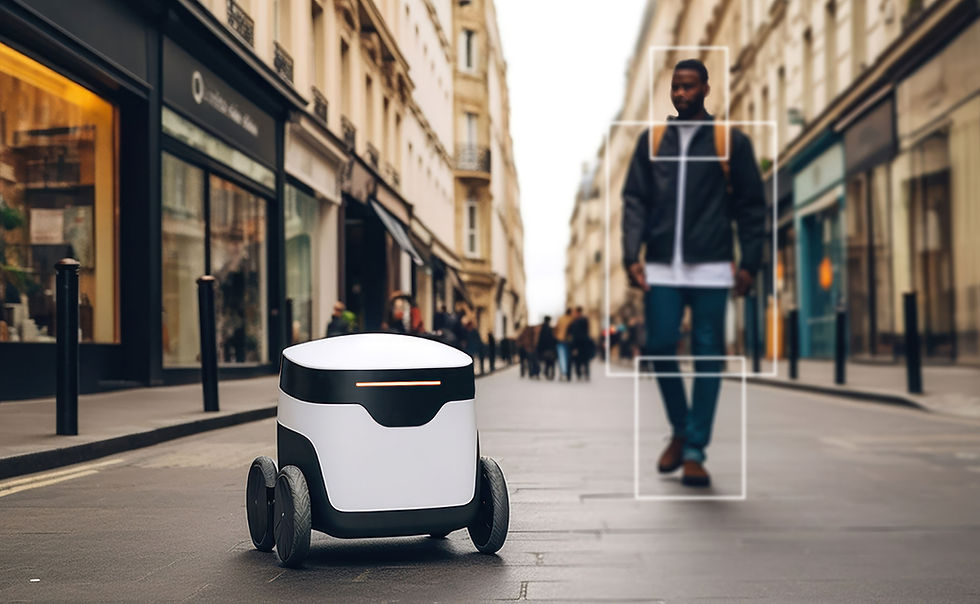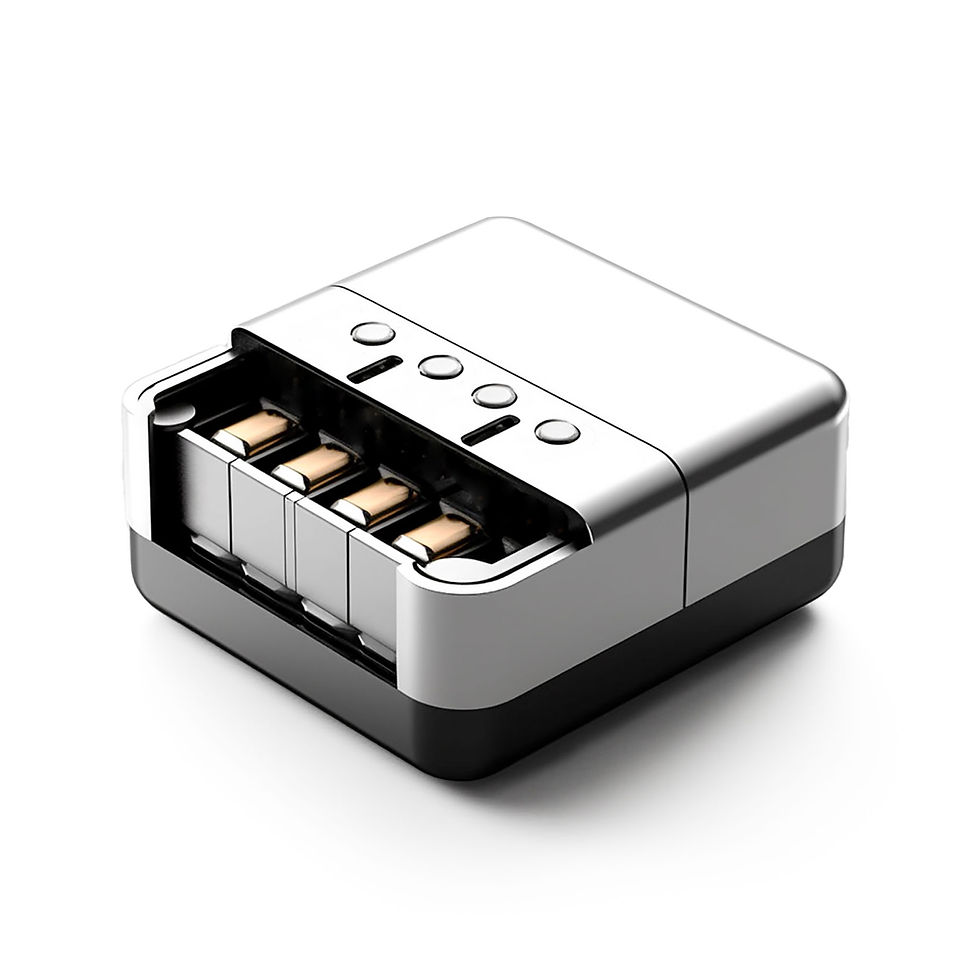Build a Basic Robot: Method & Materials
- Sylvia Rose

- Mar 19
- 4 min read
Robotics combines design, construction, and operation so machines can perform tasks automatically. Robots are a wide range of creations and complexities. Here are the basic steps to building a robot.

A simple line-following bot might only use basic sensors and a few motors, while an autonomous drone can use advanced navigation and image recognition technology.
In 2023, the global robotics market is over $77 billion USD. The market is valued at $94.54 billion in 2024 and projected to reach $372.59 billion by 2034, representing a CAGR of 14.70%.

Define Robot Purpose
Functionality: Specific tasks the robot will perform such as vacuum floors, water plants, fly or play games.
Environment: Bots for indoor use might need different components than those designed for outdoor terrain.
Complexity: From basic model to sophisticated machine with many capabilities.
Defining its purpose dictates features, capabilities, and components.
Simple Movement: A robot moving around an area avoiding obstacles requires simple motors, sensors and a microcontroller.
Object Manipulation: Building a robot to pick up and move objects needs more complex mechanisms like robotic arms, grippers, and advanced sensors.
Interactive Robot: The robot might interact with its environment using voice commands or facial recognition. Advanced sensors, a powerful processor, and possibly cloud-based services are needed.

Robot Hardware Components
Microcontroller: The "brain" of the robot. Popular choices include Arduino or Raspberry Pi. These platforms have extensive community support.
Motors: Provide the movement. DC motors, stepper motors, and servo motors offer different control methods and are suited for various applications.
Servo motors can control arms or legs, while DC motors can drive wheels. Experiment to choose the best type.
Sensors: Help the robot perceive its environment. Common types include:
Distance Sensors (Ultrasonic, Infrared): Detect obstacles and measure distances.
Light Sensors: React to changes in light levels.
Gyroscope and Accelerometer: Measure orientation and acceleration.
Encoders: Track motor position and speed.
Temperature sensors for environmental monitoring
Infrared sensors for obstacle detection

Power Source: Batteries are the most common choice. Consider voltage, current, and battery life. Other options include batteries, solar panels or a wired connection. If robot needs to be mobile, rechargeable batteries with a capacity of at least 2000mAh give longer operation.
Chassis/Frame: Provides a physical structure for the bot upon which to mount components. A pre-made chassis can be purchased, or it can be created with materials like acrylic, aluminum, wood or LEGOs.
Wiring and Connectors: These connect all components together. Breadboards, jumper wires, and soldering equipment may be useful. A breadboard, or protoboard, is a solderless platform used to rapidly prototype and test electronic circuits.

Robot Mechanics
Locomotion: How the robot moves, such as wheels, tracks, legs, or a combination of these.
Actuation: How the robot performs tasks. This might involve robotic arms, grippers, or other mechanisms.
Stability and Balance: The robot must be stable. Balanced weight distribution and the placement of motors and batteries depend on balance.
Building starts with a design or blueprint.
1. Sketching
Simple sketches help map out the robot’s layout.
2. 3D Modeling
CAD software can create detailed 3D models, showing how all components can fit together. The planning stage saves time during assembly by preventing misalignments.

Robot Assembly
Assemble the Chassis: Mount the frame and attach the motors and wheels (or other locomotion mechanisms). All pieces should fit securely and be stable enough to support other components.
Mount Sensors and Electronics: Securely attach sensors, the microcontroller, and other electronics to the chassis, based on the design.
Modular setups can provide flexibility for future upgrades or replacements. A modular setup is built from independent, interchangeable modules.
Mount the motors carefully on the chassis. Depending on design, it might be necessary to drill holes or attaching mounting brackets.
Wire the Components: Connect the motors, sensors, and microcontroller. Organize the wiring neatly to prevent tangles. Double-check connections before powering up.
Test and Debug: Once assembled, test each component individually to make sure it works properly.

Program the Bot
Programming brings the robot to life. Using programming language supported by the microcontroller (e.g., C++ for Arduino, Python for Raspberry Pi), write the code.
Read Sensor Data: Interpret input from sensors. The sensors can respond to environmental changes. For example, the ultrasonic sensor can stop the robot when an object is detected within 10 cm.
Control Motors: Control the robot's movement based on sensor data or pre-programmed instructions. Start with simple command sets, like controlling direction and speed.
Implement Logic: Define how the robot should react to different situations and make decisions.

Testing, Refining & Iteration
A bot usually doesn't work perfectly on first try. Testing and refining are often done multiple times. Run tests to ensure the robot functions as desired. Make adjustments to design or code based on results.
Observe and Analyze: Watch the robot's behavior and identify areas for improvement.
Debug Code: Fix any errors in code.
Adjust Hardware: Make adjustments to hardware as needed, such as changing motor placements or sensor angles.
Troubleshooting Common Issues
Robot Not Moving
Double-check the motors. Ensure they are powered and wired correctly, and the microcontroller is functioning.
Sensors Not Responding
Revisit the wiring and make sure the programming for the sensors is accurate. Running simple test programs can help isolate issues.
Unexpected Behavior
Debug code step-by-step. Logical errors can lead to incorrect responses, so reviewing code thoroughly is vital. Code can be devious, as one little semi-colon out of place can mess up the whole operation.

READ: Lora Ley Adventures - Germanic Mythology Fiction Series
READ: Reiker For Hire - Victorian Detective Murder Mysteries


